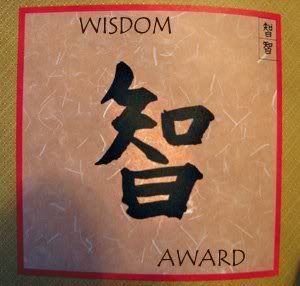Friday, January 18, 2008
It is believed that the "valentine" was the first greeting card.
Valentine's Day - is the second largest card sending and receiving day each year only surpassed by Christmas. One billion valentine cards are sent each year. The first written valentine is attributed to a young Frenchman, Charles, Duke of Orleans. From his confinement in the Tower of London after the Battle of Agincourt in 1415, Charles fought his lonely confinement by writing romantic poems or rhymed love letters to his wife in France. About sixty of them remain. They can be seen among the royal papers in the British Museum. During the fifteenth century, one valentine showed a drawing of a knight and a lady, with Cupid in the act of sending an arrow to pierce the knight's heart. By the sixteenth century written valentines were so common that St. Francis de Sales, fearing for the souls of his English congregation, sermonized against them. During the seventeenth century people made their own valentines using original verse or poems copied from booklets with appropriate verse. The Victorians took the cards to elaborate lengths, trimming them with lace, silks and satins and embellishing them with special details like feathers, flowers, Cupids and hearts, gold leaf, hand painted details and even sweetly perfumed sachets. The first commercial valentines appeared circa 1800 and were rather simplistic. Cards were hand-delivered. Until the mid-1800's, the cost of sending mail was beyond the means of the average person, and the recipient, not the sender, was expected to pay the cost of mailing. It wasn't until the advent of the penny posts that the modern custom of sending Valentine's cards really gained critical mass. By the 1830's and 1840's Valentines contained delicate and artistic messages. Valentines made of fine papers and decorated with satin, ribbon, or lace commanded high prices. They had pictures of turtledoves, lovers' knots in gold or silver, bow and arrows, cupids, and bleeding hearts. All of these symbols have become associated with love and lovers. In the 1840's the first mechanical valentines were introduced. By pulling a tab, a figure or object on the card could be made to move. Some had elaborate honeycomb pop-outs or various other three-dimensional features. Manufactured Valentine cards didn't appear until the end of the nineteenth century. "Penny" postcards, which were popular from about 1890 to 1917, were called penny postcards because they were mailed with a one-penny postage stamp. It was very "proper" at that time to collect and display your collectionof postcards and trade cards in the parlor. Friends and guests would often sit for hours, leafing through the album while they visited. The penny postcard became so popular during this era that photographers, studios, printers, and business were always trying to find new and exciting subjectsto satisfy an audience that was hungry for new ideas to impress their friend at home. To make their cards stand out, people often sought out real photographic postcards. Instead of mass-produced lithographs, these were actual photographs made with a postcard printed back. The photography studios often employed women to hand tint and color the black & white photo postcards. Some of the best photo postcards came from Germany, which was also famous for its detailed and colorful lithography. Popular subjects for these photo postcards were women, children, flowers, and young lovers, posed and arranged in an effort to portray the idealized virtues of the Victorian Era. A Mount Holyoke College student, Miss Esther Howland, crafted the first U.S. made valentines. Her father, a stationer in Worcester, MA, imported valentines every year from England. Esther, however,decided to create her own valentine messages. Around 1830 she began importing lace, fine papers, and other supplies for her valentines. She employed several assistants and her brothers helped market her "Worcester" valentines. As one of our first successful U.S. career women her sales amounted to about $100,000 per year in 1847 not bad for that era!!A purchased valentine became the most popular way to declare love during the early decades of the nineteenth century. We've seen a change from the heavy sentimentality of earlier days to what can best be described as a light touch. Nowadays a valentine usually accompanies a more elaborate gift of candy, flowers, perfume, etc. American school children usually celebrate St. Valentine's Day with a party at school. Prior to the party the children make a decorated box with a slot in the top. During the party the children distribute valentines to their classmates' Valentine's Box. Valentine cards are manufactured on an enormous scale today that range from the sentimental to sophisticated to humorous valentines. There is a valentine for everyone--sweetheart, spouse, children, parents, teacher and even your pet!






















